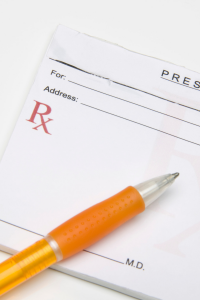Is that tickle in your throat the result of an oncoming cold or something more serious? Learn the signs and symptoms of bacterial throat infections.
It is often the first sign of an oncoming illness. The scratchy, often burning sensation at the back of your throat lets you know that something in your body is just not right. Often it is nothing more than a viral infection that will pass in a few days, but how can you tell if it is something more serious?
While viral throat infections can often resolve themselves without any medical intervention, that is not the case for bacterial infections. Learning the difference and when it’s time to speak to a doctor is important to protect your health.
A Tickle in the Throat
While a sore throat is an annoying and often painful symptom, it is also your body’s way of telling you that something is not right with your body. Often this symptom is just one of many with the common cold or flu and will resolve itself in a few days, but this is not always the case.
Knowing the difference between a simple viral infection and something more serious is a proactive way to safeguard your health.
Clear the Air

Of course a scratchy throat is not always a sign that an illness is on its way. Many allergens and irritants can also cause an irritated throat as well including:
- Cigarette smoke
- Allergies to dust, pollen, pet dander can all cause throat irritation
- Postnasal drip can cause inflammation to the throat
- Dryness in the air can cause throat irritation
- Mouth breathing-often due to nasal congestion in the sleep-this can cause an early morning tickle in the throat
- Overuse-long periods of talking, yelling or singing can all irritate the throat
While the occasional sore throat along with cold or flu symptoms is considered ‘normal’, having a painful throat regularly is not. In fact, a UK case study has found that it can be an early warning sign of cancer of the larynx.
Flu-like symptoms are often the first sign of HIV. In HIV-positive patients, chronic sore throats can also occur as part of a secondary infection.
Gastroesophageal reflux disease (GERD) can often cause a sore throat as this digestive system disorder causes stomach acid and contents to back up into the esophagus and cause pain in the throat.
Signs and Symptoms of a Throat Infection

If the pain in your throat is caused by infection rather than irritants, allergens or a chronic condition, there are several signs and symptoms that are often present. While the symptoms will vary depending on the type of infection, you will often notice:
- Your voice sounds hoarse of muffled
- The glands in your neck and jaw may feel swollen or sore to the touch
- Painful or scratchy sensation in the back of the throat
- Pain in the throat that intensifies with swallowing or talking
- If you have tonsils, they may be red or have white spots or pus
Is it a Viral or Bacterial Throat Infection?
Throat infections can be caused by both a virus or a bacteria entering your body. With a viral infection, a sore throat is often the first of several symptoms. The virus will enter the body and cause the pharynx (throat) to become irritated or inflamed, which will then cause discomfort. This discomfort can range from scratchiness to severe pain when talking or swallowing.
Viral Throat Infection Symptoms

When the infection is viral it is often accompanied by cold or flu-like symptoms including:
- Coughing
- Sneezing
- Body aches
- Headache
- Nausea or vomiting
- Runny nose
- Fever
Think you have a viral throat infection? Check out more information on viral throat infections here.
The pain in your throat may last a few days and then should resolve itself without medical intervention. For a viral throat infection, many rely on home remedies to relieve the discomfort such as:
- Drinking warm beverages to soothe the throat such as herbal tea or hot water with honey
- Enjoying cold treats such as popsicles to numb the throat
- Sucking on lozenges (for those four and older)
- Using numbing sprays for temporary relief
- Using mild pain relievers

The common cold or flu virus is not the only viral infections that can cause a sore throat. This symptom is also associated with:
- Chickenpox
- Mononucleosis (mono)
- Croup (this common childhood illness is characterized by a distinctive barking cough)
- Measles
If your symptoms are not getting better or you find yourself getting worse it is important to seek the advice of a healthcare professional.
Bacterial Throat Infection

While a number of bacterial infections can cause a sore throat, the most common is Streptococcus pyogenes, or group A streptococcus, which causes strep throat. This bacteria lives in the nose and throat and can easily spread to other people. If an infected person coughs or sneezes they produce respiratory droplets which contain the bacteria. This can be spread to others through:
- Breathing in the droplets
- Touching an area infected with the bacteria and then touching their face
- Sharing a glass or food with an infected person
- Rarely this bacteria can be spread through food contamination
While strep throat can affect anyone of any age, it is especially common for those between ages 5 and 15.
Bacterial Throat Infection Symptoms

While strep throat is generally a mild bacterial infection, it can be very painful. Strep throat symptoms often include:
- A sudden sore throat
- Pain when swallowing
- Swollen neck or jaw that may be tender to the touch
- Tiny red spots on the roof of your mouth
- Fever
- Tonsils may be red and swollen or even has pus or white spots
Two Questions to Ask Yourself
Fortunately, there are often simple ways to tell if your throat pain is from a viral or bacterial infection. Often you may be able to determine if you need to go in to see your doctor by asking yourself two simple questions:
- Do you have a cough?
- Have you had a fever in the last 24 hours?
While many cold and flu viruses will cause both of these symptoms, a strep throat will not cause a cough. This checklist was deemed so valuable that a team of researchers in a 2013 study used the information from these two questions along with the number of bacterial throat infections in the area to allow users to self-diagnose at home. The study of over 70,000 participants found that 90 percent of those who were deemed ‘low-risk’ by this criteria also tested negative for strep throat in lab results.
Over Treatment in the U.S. Healthcare System

One of the most important things to determine with a sore throat is whether or not you need medical intervention. This distinction is important as a recent survey of 2000 doctors noted that overtreatment is a common occurrence in the U.S. healthcare system. The study noted that fear of malpractice, patient demand and some profit motives were seen as the cause of this trend.
In fact a 2017 study by the American Medical Association found that physicians reported that more than 20 percent of medical care they offered was unnecessary.
Diagnosing a Strep Throat

If you are concerned you may have a bacterial throat infection it is important to see your doctor for the required antibiotics. In order to diagnose your infection your doctor will examine your throat for signs of infection including the red spots on the roof of your mouth as well as signs of infection on your tonsils.
It is still possible to get strep throat if you have had your tonsils removed. Many doctors will recommend removing tonsils (tonsillectomy) for those who frequently get strep throat. While it is not a cure for strep throat, it can often reduce the severity of the symptoms and the frequency of the infection.
Check out Everything you need to know about tonsils
If your doctor sees signs of a bacterial infection, they may take a sample of fluid from the back of your throat to test. This is called a rapid strep test as the results come back in about 15 minutes. A positive result means you likely have strep. If the result is negative your doctor may send it to a lab for further examination and evaluation.
Treatment
Unlike viral throat infections which will resolve themselves without medical intervention, bacterial throat infections require antibiotics to treat them. Your doctor can prescribe the required treatment and most people will feel better after about 24 hours.
It is important to finish the entire course of antibiotics and not stop your treatment once the symptoms disappear in order to fully eradicate the bacteria and prevent and complications. Most treatments are about 10 days.
A New Approach to Healthcare
Saving yourself a visit to the doctor is not only good for your wallet, but it helps the spread of viral infections. If you want to know if you really have to go, you can always connect with one of our doctors for a free online doctor chat.
Your Doctors Online is a free 24/7 medical consultation where you can connect to a doctor or nurse online in minutes from the comfort of your smartphone. Don’t waste your time in a busy urgent care clinic or ER room, connect with us in minutes.







